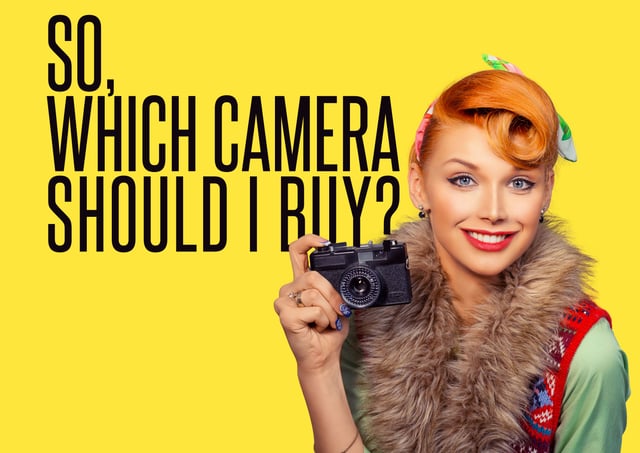
The surge in popularity of using DSLR and mirrorless cameras to shoot video means there are hundreds of affordable quality cameras on the market. How is someone just starting out in video production supposed to sort through it all and decide what camera to buy? We’ve got your back! Take a look at this breakdown of the most important features in choosing a DSLR or mirrorless video camera.
What am I going to use it for?
This is the first question you should ask yourself. If you’re primarily a photographer, you’re probably going to be looking at a camera’s megapixel count and features like auto-focus. A videographer, on the other hand, is inclined to be more interested in a camera’s anti-aliasing or focus peaking capabilities. Your needs will vary based on the work you do. For example, if you work in a studio then a camera’s iso performance won’t matter as much as it would to someone who shoots a lot of dimly lit live events. So, thinking about what you intend to use a camera for is the first step in selecting which camera to buy.
To 4k or not to 4k?
4k video is probably the most talked about yet least understood concept by would-be first time camera buyers. Simply put, 4k, or Ultra HD, is a video resolution with four times the pixel count of the current 1080p. The higher resolution allows you to capture more detail. As you can see in the comparison, even when a 4k image is scaled down to 1080, it is still quite a bit more detailed than a standard 1080 image. Studies show that the adoption rate of 4k displays is progressing much faster than the transition to HD TVs did. So, that’s another thing to think about when deciding on a camera.
Sensor size and you.
Full frame! Cropped! Micro Four Thirds! These terms describe the actual sensor size of the camera, which directly affects how wide or tight your shot will be. Larger sensors are also better in low light and allow you to use a shallower depth-of-field for a more cinematic look.
"Full Frame", APS-C, and Micro Four Thirds are three of the most common sensor sizes found in DSLR and mirrorless cameras.
So wait it doesn’t come with a lens?
Well, it might, and if that’s all you have then by all means use it! However, be weary of lenses that are bundled into packages with a camera body. Lenses slower than f.2.8 can become a burden when shooting in low light or trying to achieve a shallow depth-of-field. Zoom lenses have a ranging focal length, which is a fancy way of saying they can zoom in and out. Prime lenses have a fixed focal length, meaning they don’t zoom in or out. Generally speaking, quality prime lenses are more affordable than quality zoom lenses. A tried-and-true low cost lens that is great to start out with is the 50mm f1.8. Both Canon and Nikon have a model of this and it can be purchased anywhere from $50-$100.